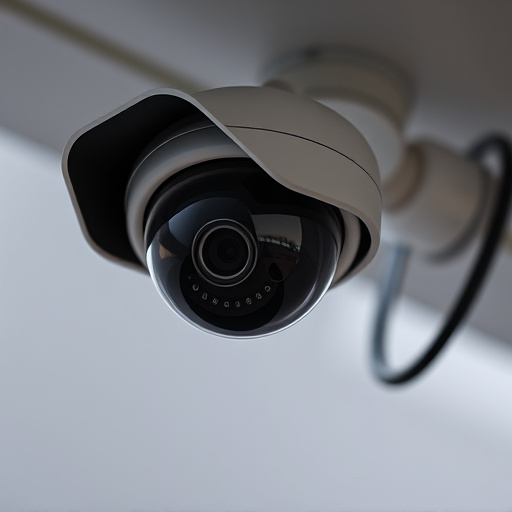Solar-powered fake camera setups offer an eco-friendly, high-security solution for homes and businesses. Mimicking real cameras with solar panels charging a rechargeable battery, these devices create a deterrent effect without the need for wiring or constant human presence. Strategically placed, they reduce burglary and vandalism risks through 24/7 surveillance, minimal maintenance, and integration options, catering to environmentally conscious individuals seeking comprehensive protection. Effective upkeep involves regular cleaning, component checks, firmware updates, and motion detection tests to ensure optimal performance.
“Enhance your home or business security with a cost-effective and efficient solution—the solar-powered fake camera setup. This innovative device mimics real security cameras, deterring potential intruders with its convincing presence. In this article, we’ll guide you through the process of understanding, installing, and maintaining this impressive system. From exploring the essential components to uncovering its diverse applications, get ready to transform your security measures while keeping costs low with this solar-powered game changer.”
- Understanding Solar-Powered Fake Camera Setup
- Components and Installation of Imitation Security Cameras
- Benefits and Applications in Home and Business Security
- Best Practices for Maintaining and Updating Your Solar Fake Camera System
Understanding Solar-Powered Fake Camera Setup
A Solar-Powered Fake Camera Setup is a clever and eco-friendly way to deter potential intruders, offering a realistic alternative to traditional security measures. These devices typically consist of a solar panel that charges a rechargeable battery during daylight hours, which then powers an imitation camera. The setup appears as a real security camera, often complete with LED indicators and a lens, but without the need for wired connections or external power sources.
This technology is particularly useful for homeowners seeking a low-maintenance, visible deterrent against theft or vandalism. By strategically placing these fake cameras around properties, individuals can create the illusion of enhanced security, making would-be criminals think twice before attempting any malicious activities.
Components and Installation of Imitation Security Cameras
Imitation security cameras, often referred to as decoy or fake cameras, are an effective deterrent for potential criminals. These devices typically consist of a high-quality replica camera housing and a motion sensor. The key components include the solar panel (for energy), the camera itself, the motion detector, and a battery system to store excess energy. Some advanced setups may also feature LED lights that activate upon detection, further enhancing their realism.
Installation is usually straightforward and can be done in various locations around your property. Solar-powered fake camera setups are particularly versatile as they require no external wiring, making them ideal for outdoor use. The process involves mounting the camera on a pole or wall, positioning the solar panel in an area with ample sunlight, and ensuring the motion sensor is correctly calibrated to detect movement within the desired range. Regular cleaning and maintenance, such as wiping down the lens and checking battery levels, will ensure these devices continue to serve their protective purpose effectively.
Benefits and Applications in Home and Business Security
Imitation security cameras, particularly those powered by solar energy, offer a multitude of benefits for both home and business owners looking to enhance their security measures. One of the primary advantages is their ability to deter potential intruders. By strategically placing realistic-looking fake camera setups around properties, homeowners and businesses can create the illusion of enhanced surveillance, significantly reducing the risk of burglary or vandalism.
These solar-powered devices provide 24/7 monitoring without the constant presence of a human guard. They are easy to install, require minimal maintenance, and can be integrated into existing security systems for comprehensive protection. In homes, they can act as a deterrent for casual intruders, while in businesses, they contribute to a safe work environment and protect valuable assets. Additionally, their eco-friendly design makes them an appealing option for environmentally conscious individuals seeking modern security solutions.
Best Practices for Maintaining and Updating Your Solar Fake Camera System
To ensure your solar-powered fake camera setup remains effective, regular maintenance and updates are crucial. Start by regularly cleaning the lenses and sensors to prevent debris buildup, which can impede their performance. Check for any signs of damage or wear on both the physical camera components and the solar panels, repairing or replacing them as needed. Keeping the batteries charged is essential; consider implementing a backup power source for continuous surveillance.
Update your system’s firmware periodically to access new features and security enhancements. Stay informed about potential vulnerabilities in the software and hardware, applying patches promptly. Regularly test the camera’s motion detection capabilities and adjust sensitivity settings as necessary to avoid false alarms while ensuring optimal coverage. Additionally, keep an eye out for any advancements in solar technology that could improve your setup’s efficiency and longevity.
A solar-powered fake camera setup offers a cost-effective and environmentally friendly solution for enhancing home and business security. By strategically placing these imitation security cameras, you can deter potential intruders and create a sense of vigilance. Regular maintenance and updates ensure the system remains effective, providing peace of mind and added protection for your property. Embrace this innovative technology to fortify your security measures without breaking the bank.
